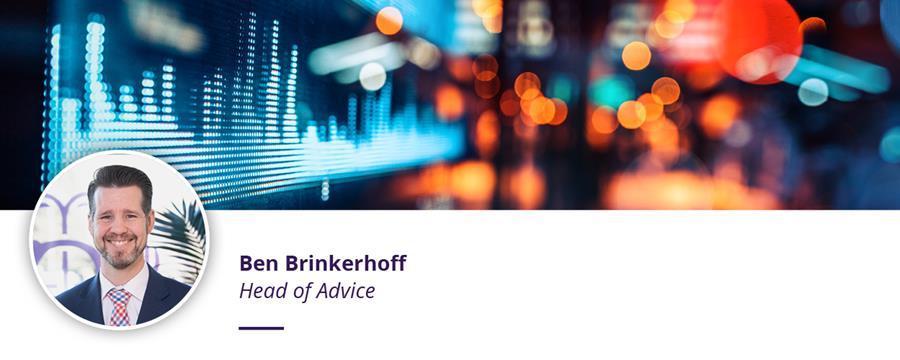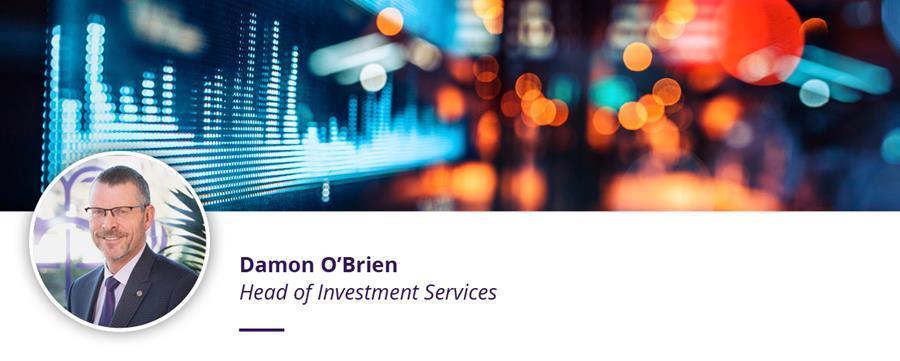
8 minute read
Where’s the evidence...? Active versus passive (Part 1)
from CIC Yearbook 2022
by Consilium
Introduction
Asness, Frazinni, Israel, and Moskowitz (2014) suggest that “anything that deviates from the market portfolio, which weights assets in proportion to their market values is, by definition, active”.
Advertisement
In that context, a portfolio that deviates from market weights must be balanced by other investors that are willing to take the other side of those active bets.
This definition is intuitive and well accepted. However, while the definition of passive investing is easily understandable as a consistent approach to capturing the performance of a defined market index, there is a spectrum of what can be considered active investing.
Active investing is everywhere Stock picking
Active investing is not limited to a single, uniform approach or to only one investment structure.
For many investors, active investing involves stock picking based on information such as a pending new product announcement or involvement in an industry that is perceived to have desirable attributes. This approach often also involves frequent buying and selling.
For the purposes of this paper, we’ll call this “ad hoc active investing”.
Factor investing
Under the standard definition of active investing (Asness, et al), it follows that factor investing is also “active”. However, factor investing is very different to ad hoc active investing.
With factor investing, shares are purchased based on a measurable unbiased characteristic (e.g. a book-to-market ratio) irrespective of the news flow around the company. In this sense, there is a similarity to passive investing where shares are purchased in relation to their size relative to other companies.
Therefore, factor investing could be characterised as “systematic active investing”.
Factor investing does not mean buying and holding a share forever. If value investing was being followed and a company’s book-to-market ratio declined materially, the company would be sold. Again, this is similar to what occurs in passive investing. A company that has a material decline in market capitalisation and receives a lower index weight may be sold by funds tracking the index.
ETFs
Not all ETFs are passive investments; in fact some are very active. Of course, any ETF that follows an index other than the market index is technically active, but we are talking about a degree of activeness above and beyond this. This additional activeness can take several forms.
Firstly, the ETF may offer returns that are similar to the index in form but different in substance. Cheng, Massa, and Zhang (2019) documented that ETFs often engage in ‘synthetic replication’ of an index.
This involves investing in a portfolio of shares and entering a swap arrangement with a financial institution where the returns from this portfolio are “swapped” with the returns on the index. The ETF investors achieve the index return (adjusted for a small tracking error) less a fee, and the ETF provider receives some benefit from any outperformance of the portfolio of shares held. The issue here is that investors are exposed to a new risk - default risk on the part of the swap counterparty.
Secondly, as noted by Easley, Michayluk, O’Hara, and Putnins (2021), ETFs may intentionally invest in a manner that involves taking active positions based on factors or ad hoc active investing approaches.
Managed funds
Although managed funds can offer passive or active investment options, the vast majority of funds market themselves as ad hoc active investors. Interestingly, in spite of that positioning, many of these funds may actually be quite near to their passive competitors. Cremers, Ferreira, Matos, and Starks (2016) found that approximately 20% of worldwide managed fund assets are owned by ‘closet’ indexers. They also found that when there were more low-cost explicitly indexed funds to provide competition, actively managed funds charged lower fees and were more active.
Most funds that implement an ad hoc active investment approach will generally look to engage in market timing (across regions, industries or individual companies). In-house fund analysts compare their own valuations and forecasts with current market pricing, with significant differences often acting as a catalyst for the fund’s buy or sell decisions.
Measuring activeness
The degree of activeness of a fund or strategy is often measured using the concept of “Active Share”, developed by Cremers and Petajisto (2009).
They proposed a formula which calculates the cumulative differences between the weights of a portfolio of securities and the weights of these securities in the corresponding benchmark. The Active Share of the portfolio is 0 if the portfolio holdings are identical to the market benchmark and 1 if the portfolio holds only non-benchmark securities.
If Active Share is calculated using the market index as the benchmark, it captures the commonly accepted definition of activeness. However, Active Share can also be calculated versus a non-market index benchmark, such as a small company index. In this case it would be understating the activeness versus the market as it is not capturing the fact that the small company index itself has an active component.
Theoretical background
In ‘The Arithmetic of Active Management’ (1991, p7), William Sharpe stated that –
“It must be the case that:
1. before costs, the return on the average actively managed dollar will equal the return on the average passively managed dollar, and
2. after costs, the return on the average actively managed dollar will be less than the return on the average passively managed dollar
These assertions will hold for any time period. Moreover, they depend only on the laws of addition, subtraction, multiplication and division. Nothing else is required.”
This observation is a useful way of making the point that active investors who “win” generally require there to be other active investors who “lose”. However, there are some nuances to this argument.
Sharpe’s (1991) observation was dependent on an assumption highlighted in his footnote four:
“We assume here that passive managers purchase their securities before the beginning of the period in question and do not sell them until after the period ends. When passive managers do buy or sell, they may have to trade with active managers. At such times, the active managers may gain from the passive managers, because of the active managers’ willingness to provide desired liquidity (at a price).”
Pedersen (2018) points out that, in reality, this assumption is violated in a nontrivial way. New companies are added to market indices, others are removed, and companies issue more shares and engage in buy backs. Each of these events creates an opportunity for active management to add value. While this reasoning does not imply that active management will add value (empirical tests are required to address that question), it refutes the suggestion that it cannot add value. It should also be noted that not all passive managers neglect the opportunities presented in respect of index rebalancing, share issuances and buybacks. Some passive managers utilise these events to generate performance above the index through efficient trading.
Berk and van Binsbergen (2015) also highlighted the point made by Pedersen (2018) about passive investors providing opportunities for active investors to add value in aggregate. They noted the observations that many make about active managed funds competing solely against each other are too simplistic. In reality, there are also large numbers of active individual investors in the marketplace. These individual investors display numerous behavioural biases so it may be possible that active managed funds could add value from trading against these active individual investors.
Efficient markets?
Eugene Fama (1970) proposed that security markets are fully efficient, but this leads to two paradoxes.
As Grossman and Stiglitz (1980) point out, in a perfectly efficient market, no one has the incentive to collect information on which to trade, which raises the question of how markets become efficient.
Furthermore, if markets are fully efficient, then the fees paid to active managers represent an inefficiency in the market for asset management (discussed by Garleanu and Pedersen, 2018).
Even if markets are only partially efficient there is still a paradox. The evidence suggests that markets reflect available information to varying degrees and varying speeds, which implies that either all investors are partially rational or there are enough fully rational investors to move markets towards efficient pricing.
Either way, it is difficult to reconcile the widespread investment in active managed funds and partially rational investors with a situation of all active managed funds consistently destroying value.
Rather, it seems there must be a credible reason for partially rational individuals investing in active managed funds. There are several possibilities: a) All active managed funds consistently add value b) Some active managed funds consistently add value c) All or some active managed funds add a lot of value in certain time periods d) Investors reach a credible view on value creation that miss certain nuances that, if known, would change their perspective
In short, there is no evidence that active managed funds consistently add value. Some funds have delivered extended periods of observed outperformance, but there is debate regarding whether this has more to do with chance than reliable manager skill. With thousands of global funds attempting to outperform the market, the law of large numbers dictates that a few of this group will repeatedly ‘win’, even if purely by chance.
It seems most likely that c) and/or d) are the explanations.
Conclusion
Many active funds add value in different periods and, from a behavioural perspective, there is considerable investor focus on these periods. This could create the impression of more outperformance than there actually is.
Allied to this, Pastor, Stambaugh, and Taylor (2015) found that active fund performance typically declines over a fund’s lifetime. This may go some way to explaining the widespread notion among investors that active management adds value. If they have invested in an active mutual fund that has performed well initially, it is possible that they will remain focused on this early success during subsequent years of underperformance. Whilst global investor flows into passive investment vehicles have increased substantially over the last two decades, the majority of assets held by individual investors still remain in active managed funds. Many may continue to be attracted to the idea that active managed funds offered by professional money management firms, offer the best opportunity to “beat the market.” www.consilium.co.nz support@consilium.co.nz
This perception is relentlessly argued by the aggregate marketing efforts of the large (and vocal) active funds management industry. It is not, however, well supported by the weight of evidence, nor by the simple mathematical logic outlined in Sharpe’s 1991 paper.
Due to the size of this topic, part two of this ‘Active versus passive’ analysis (to be released next quarter) will focus on performance measurement, benchmarking and returns analysis.
Where’s the evidence...? is a series of articles produced by the Consilium Investment Team that draws on a regular review of current academic literature provided by Professor Ben Marshall, Consilium’s Independent Academic Consultant.
+64 3 353 1007




However, the Russian invasion has led fund managers to quickly review their investment approach. Below we summarise each manager's response to this unfolding situation. Bear in mind, this is still a very fluid situation, and we expect each approach to be subject to further change, as more information emerges.
Will divest Russian exposures as soon as materially possible
Will divest Russian exposures as soon as materially possible
Vanguard is still deliberating but the CIC will divest from this fund in our next SAA implementation
AMP is still deliberating but with MSCI removing Russia from its broad indices, it is now very likely that AMP will be divesting from, or writing off, their Russian exposures
For a more detailed overview of the individual fund strategies, along with a snapshot of the relevant communications received from fund managers regarding how their treatment of Russian investment exposures is likely to change, please refer to the articles on the portal.




